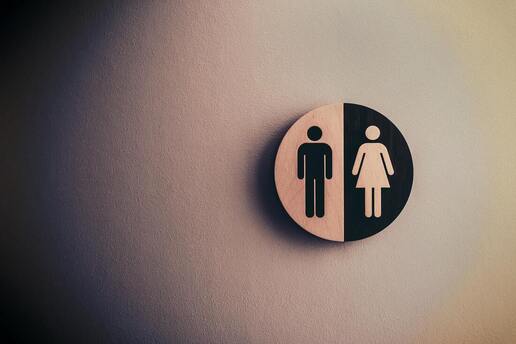8 Bladder Habits You Need To Be Aware Of
Sep 29, 2022
Did you know that our bladder is one of the most trainable muscles in our body? This is for the good or the bad. Not that anything is that black and white, but sometimes with our lifestyle and behaviors, we can teach our bladder habits that are holding us back. Does this sound like you?
- “I don’t run anymore because I pee myself.”
- “I’m going to go to the bathroom quickly before we hit the road!”
- “I don’t want to drink too much water or I will be in the bathroom all day.”
- “I hover over public toilets to pee.”
If it does, these are extremely common sentiments. However, there are ways to overcome them and treat our bladder and pelvic floor in the most compassionate way. As a pelvic floor physical therapist, here are my recommendations in accordance with the American Urological Association guidelines:
- Pee every 3-4 hours. Of course if there is a time where you have ingested more liquid than normal (let’s say first thing in the morning), that may be outside of the norm. Avoid peeing every time you leave the house “just in case” you might not find a bathroom.
- Trips to the bathroom should be 5-7 times a day. If you’re going 10 or more times, your bladder may not be filling completely but still giving you an urge to go more frequently than you need to (known as urge incontinence). If you’re going 4 or less times in the day, you’re what I consider to be a camel which often affects our Moms, healthcare workers, etc. but that is putting undue stress on the pelvic floor and urinary system.
- Sit down, ladies! I get it. There are some really nasty public bathroom situations. I simply wipe down the seat real good and count down the minutes until I can shower. If you identify as a female, sitting is the best way to relax your pelvic floor muscles so that your bladder muscle (the detrusor) can contract to allow urine to flow out. Pushing pee out under tension can lead to pelvic floor dysfunctions such as stress urinary incontinence (leaking with pressure related to running, jumping, sneezing, laughing).
- Breathe and relax. If you can afford the time, do not be in a rush. Take deep breaths into the abdomen and allow the detrusor muscle to do its thing while you take a nice break on the porcelain throne. You should not be pushing your urine out to get this whole process over with. Slow down. I like to think of what I’m grateful for and soak up the break in my day.
- Drink enough water. A good estimate is about half of your body weight in water. Drink 4-6 oz or more at a time. Sipping water does not allow the bladder to fill completely, leading back to urge symptoms.
- Avoid constipation. Straining heavily to have a bowel movement puts stress on the pelvic floor muscles. If you’re already experiencing prolapse, hemorrhoids or hernias, being constipated will exacerbate those conditions and affect your bladder. Simple tips are to drink the right amount of water, take in the right amount of fiber, and elevate your feet on a stool or squatty potty!
- Perform pelvic floor exercises. Lifting the pelvic floor muscles and squeezing along with quick contractions can help reduce symptoms of urge. Having the pelvic floor muscles isolated helps support our abdominal viscera. Check with your pelvic floor PT which exercises and dosage are right for you.
- Avoid bladder irritants when symptoms are worse. I say this because I am about to list off really common foods/drinks that irritate the heck out of the bladder. The most common irritants are alcohol, carbonated beverages and caffeinated beverages because they decrease the pH making urine more acidic. Other acidic foods are lemons, limes, oranges, tomatoes, vinegar, tea, and chili to name a few.
Consider making these adjustments and see if they help your symptoms. I will say that specific adjustments are needed for each individual depending on their lifestyle or where you fall on the incontinence spectrum. Seeing a local pelvic floor physical therapist, like myself, can assist you on the right exercises to be performing and steps to overcome urges or stress related leakages you experience.
Thanks for reading!
Krystal Fannin PT, DPT, CMTPT, RYT-200
Let us help you figure out to live your best active life today!
Remember, Movement is Medicine!

